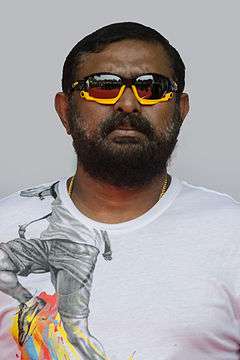Lal Mahal
The Lal Mahal (Red Palace) of Pune is one of the most famous monuments located in Pune, India. In the year 1630 AD, Shivaji's Father Shahaji Bhosale, established the Lal Mahal for his wife Jijabai and son. Shivaji stayed here for several years until he captured his first fort. The original Lal Mahal fell into ruins and the current Lal Mahal is a reconstruction of the original and located in the center of the Pune city. Shivaji's marriage with his first wife, Maharani Saibai took place in Lal Mahal. The original Lal Mahal was built with the idea of rejuvenating the recently razed city of Pune when Dadoji Kondev entered the city along with Shivaji and his mother, Jijabai. Shivaji grew up here, and stayed in the Lal Mahal till he captured the Torna fort in 1645. Towards the end of the 17th Century, the Lal Mahal fell into ruins and was eventually razed to the ground as a result of various attacks on the city. It is said that during the construction of the Shaniwarwada, some soil and stones of the Lal Mahal were used for luck. In 1734-35, a few houses were constructed on the land of the Lal Mahal and given for use to Ranoji Shinde and Ramchandraji. The records in the offices of the Peshwas mention that Lal Mahal was used for arranging feasts for the Brahmins during the thread-ceremony of Sadoba, son of Chimajiappa. The exact original location of the Lal Mahal is unknown, however it was known to be very close to the location of Shaniwarwada, which is roughly where the current reconstruction stands. The current Lal Mahal was built only on a part of the land of the original Lal Mahal. The new Lal Mahal was not rebuilt in the same fashion as the original one and there is not much information found about the area and structure of the original Lal Mahal. The current Lal Mahal was rebuilt by the PMC. Construction started in 1984 and was completed in 1988 .
Lal
Lal (Persian: لعل, Hindi: लाल, Urdu: لال, Pashto: Lāl) is an Indo-Iranian surname and given name, which means "darling", from the Sanskrit lala ("cajoling"). In addition, Lal means "garnet" or "ruby" in Persian, "ruby" in Pashto, and "red" in Hindustani. The name Lal may refer to:
Surname
List of Star Trek characters (G–M)
This article lists characters of Star Trek that received attention from third-party sources in their various canonical incarnations. This includes fictional major characters and fictional minor characters created for Star Trek, fictional characters not originally created for Star Trek, and real-life persons appearing in a fictional manner, such as holodeck recreations.
Characters from all series, listed alphabetically
Key
Bajoran characters are listed by family name, which is stated first.
Joined Trills are listed by the name of the symbiont, which replaces the family name.
G
H
K
L
M
See also
References

Lal (actor)
M. P. Michael (2 December 1958), better known by his stage name Lal, is an Indian film director, actor, script writer, producer, and film distributor widely known for his work in Malayalam cinema.
Career
Early career
He started his career as a mimicry artist in Kalabhavan, along with his childhood friend Siddique, who would later team up as Siddique-Lal to make many films. Lal and Siddique joined as assistant directors to Fazil in 1984.
Actor
After that, both decided to part ways as a director pair and Lal turned producer with the Siddique-directed Mammootty-starrer Hitler. Lal debuted in acting with a villain role as Paniyan in Suresh Gopi-starrerKaliyattam, directed by Jayaraj. Kaliyattam was a new take on Othello where Lal played Paniyan, the character standing for Iago.
Awards
Filmography
Actor
Producer
Mahal
Mahal may refer to:
Geography
Languages
Films
Other
See also

Mahalé
Mahalé is a village in north-western Ivory Coast. It is in the sub-prefecture of Gbon, Kouto Department, Bagoué Region, Savanes District.
Mahalé was a commune until March 2012, when it became one of 1126 communes nationwide that were abolished.
Notes
Coordinates: 10°8′N 6°35′W / 10.133°N 6.583°W / 10.133; -6.583
Mahal (palace)
Mahal (palace) (/mɛˈɦɛl/), from Arabic محل maḥall 'place' is an Urdu word meaning "palace". In classical Urdu poetry, the word is used in its Arabic origin to mean a place of rest often alluding to the final resting place (i.e. the grave). The translation of the word as palace was done only in contrast to the European usage, as the Muslim rulers in India would build forts and ornate areas or buildings within the forts, which would be designated as palaces. It is a summer house, private lodgings, or a landed division of pre-independent India. Both Muslim and Hindu rulers built many Mahals in India.
Notable mahals
Podcasts:

Latest News for: lal mahal
PMPML launches \u2018Pune darshan\u2019 bus service at Rs 500
- 1
